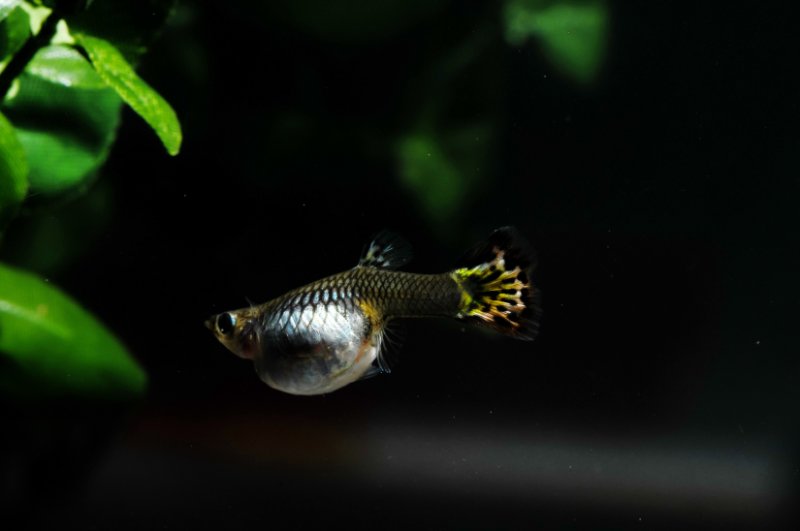Have you ever stumbled upon a female guppy in a fish tank and pondered her reproductive habits? Typical in the guppy world, pregnancy happens at a speedy pace. This scenario could result in hundreds of colorful guppies over a brief span, transforming your humble aquarium into a vibrant spectacle. If you’re fortunate, you may find yourself engrossed in the captivating world of a Pregnant Guppy.
The Prolific Life of a Pregnant Guppy
Consider this: combine a male and a female guppy, and it’s highly probable your female guppy will become pregnant within a blink. About every month, she could become pregnant – meaning she could occupy most of her life being pregnant.
Guppy propagation spawns an easing path into breeding for those seeking precise colors and quality. Therefore, starting your journey with a pair bought from a reputable breeder is highly advised. You might even opt for a nearly due pregnant female.
Remember, Pregnant Guppy‘s offspring carry genetic traits from both parents. If no resemblance is drawn to your purchased male guppy then another guppy fathered her babies. Some enthusiasts decide to wait until the next reproductive cycle to ensure desired lineage.
While female guppies lack bodily color, their tails and fins exhibit vibrant hues. Male guppies, in comparison, flaunt colored bodies enhancing their visually pleasing aesthetics.
The Role of Water Temperature
Now, getting a guppy pregnant requires maintaining your water temperature near a cozy 72 degrees F. The duration of gestation seems to dance a waltz with water temperature, where a warmer environment could shorten the pregnancy period. In certain instances where birth is overdue, breeders gently raise the temperature to prompt delivery.
Recognizing She is Pregnant
Observing your fish’s physical changes allows tracking her pregnancy. Initial signs appear as a dark gravid spot under the tail, leading towards her belly. As childbirth nears, your guppy’s movement may slow down due to her pregnant state and remain still as birthing approaches.
Before childbirth commences, certain enthusiasts prefer isolating the expecting guppy. This method provides protection to the newborns from cannibalistic adult guppies. However, it’s critical to ensure the new environment does not vary drastically from the original habitat as it could stress out the Pregnant Guppy.
Post-Birth Considerations
Once the little ones are released, they thrive on their ability to swim and feast. As for their mother, her weakened state could lead her to fall to the bottom. Rapid response by separating her from the newborns could potentially save many tiny lives.
Conclusion
With a basic understanding of the world of a Pregnant Guppy, anyone can take a step forward into this fascinating realm. Breeding these colorful species results not only in an aesthetically pleasing aquarium but also offers an intriguing learning experience about the wonders of aquatic life.


